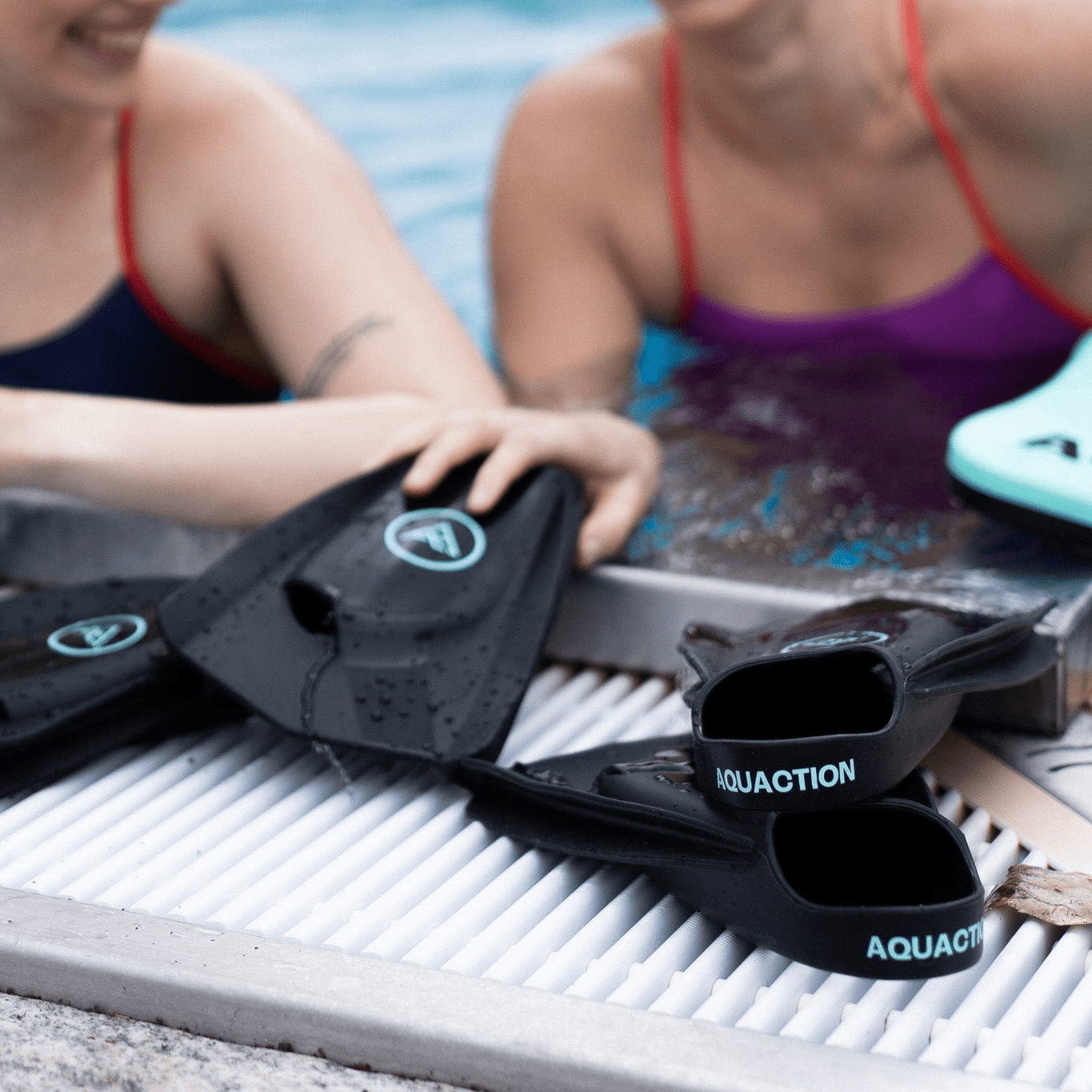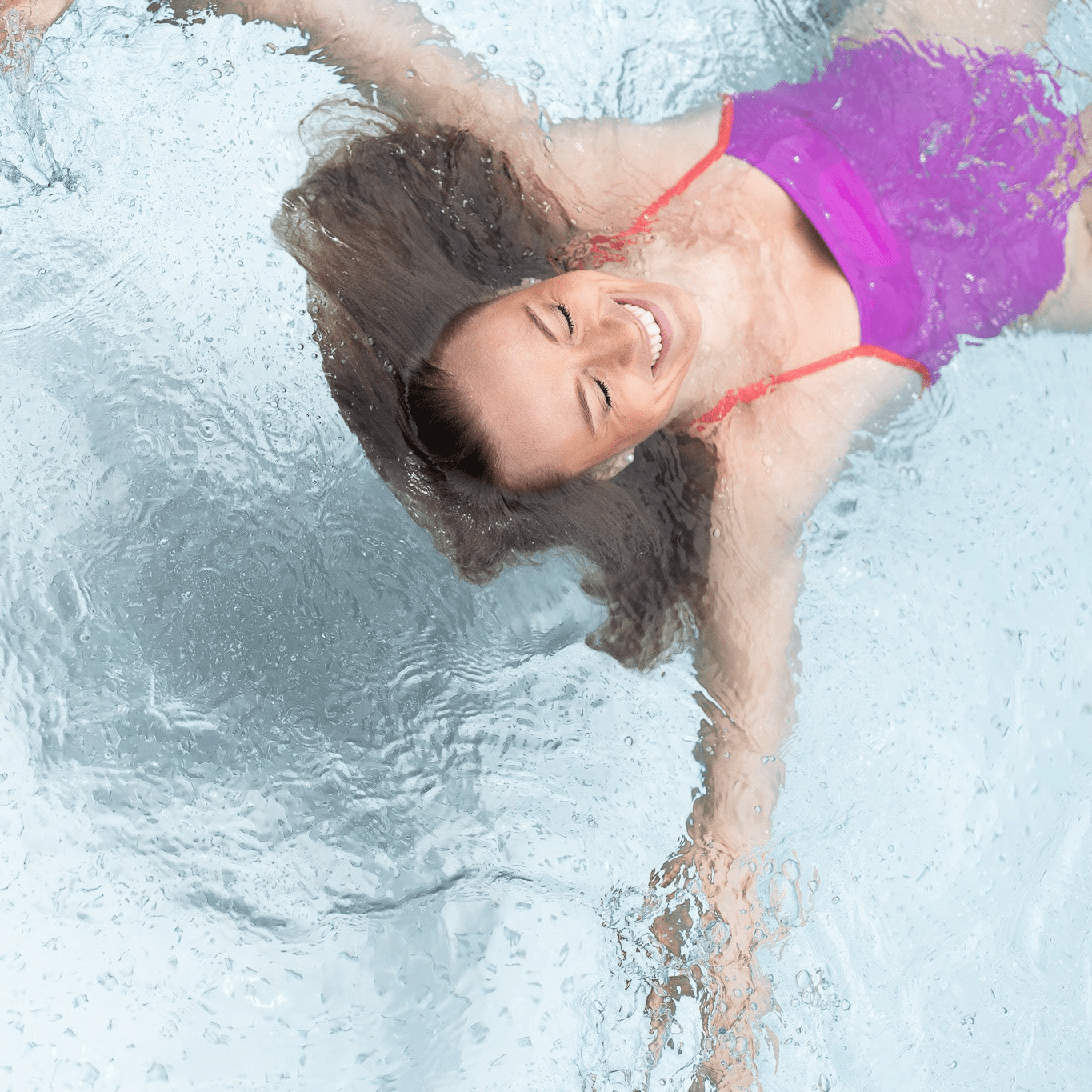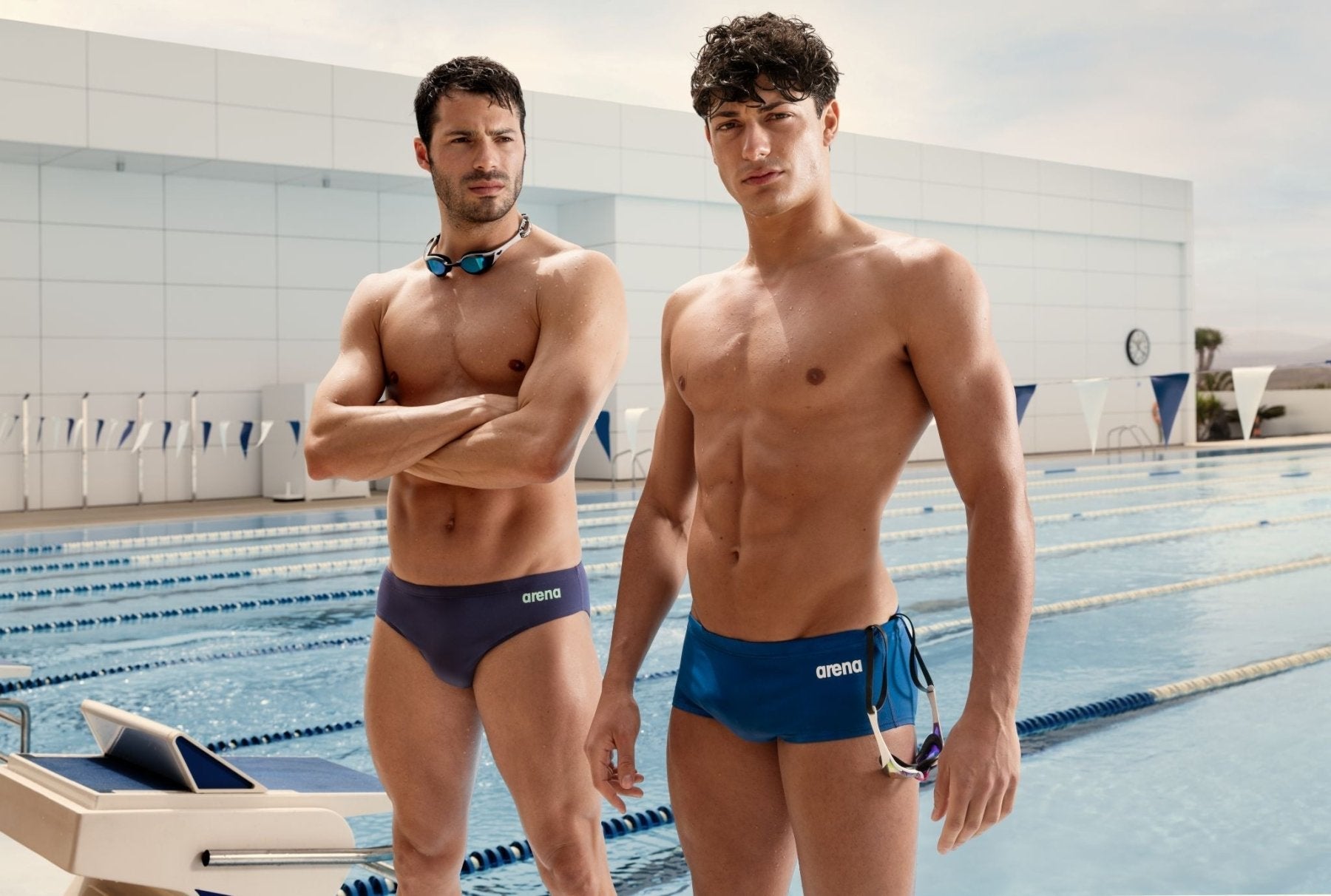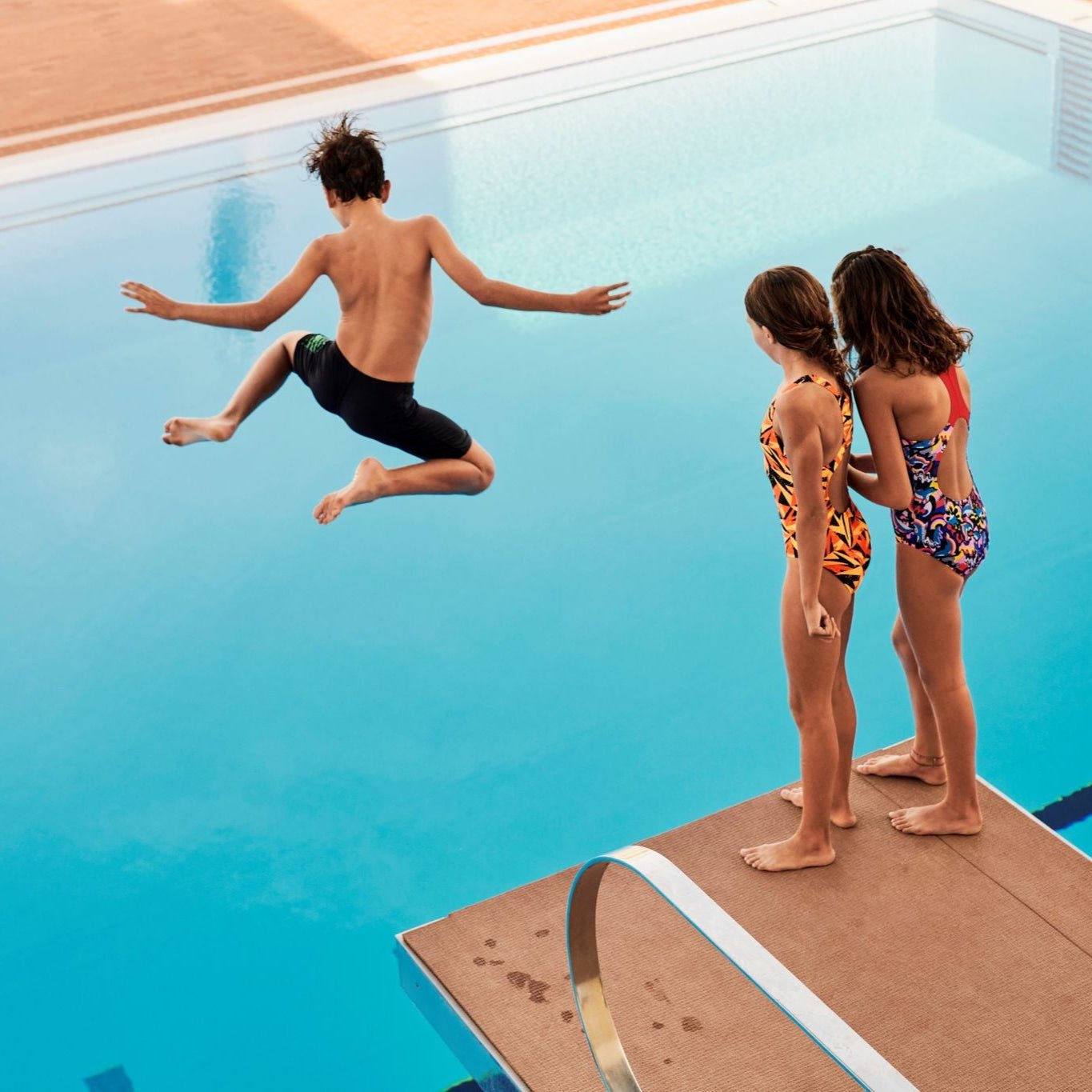Swimming with baby, tips for starting baby swimming
Baby swimming gives the child the opportunity to get to know water as an element already at the age of a few months. It is also an excellent joint hobby for parent and baby, which develops the bond between parent and child.
Baby swimming can be started after the child is three months old. Then the child's waking time is long enough, and he can move more. The child must weigh at least 5 kg in order to stay warm in water of at least 32 degrees. There is no upper age limit for starting baby swimming.
In this article, you will find tips for starting swimming with your baby and tips for bathing your baby at home. Baby swimming is a wonderful hobby and it supports taking the baby to the spa or to the beach in the summer.

Baby swimming – when to start and where can you practice baby swimming?
Baby swimming is a versatile playtime in heated water for the whole family, supervised by a trained instructor. The ideal age to start baby swimming is at least three months. At that time, the child will be awake long enough and will be able to move more. There is no upper age limit for starting baby swimming. The child must weigh at least 5 kg to stay warm in the +32 degree water. (suh.fi). Swimming pools raise the water temperature for baby swimming.
Baby swimming is widely offered in various locations; the Finnish Swimming Instruction and Lifesaving Association (Suh.fi) lists baby and family swimming locations that meet the requirements for safe and high-quality operations (you can find a list of requirements on the suh.fi website).
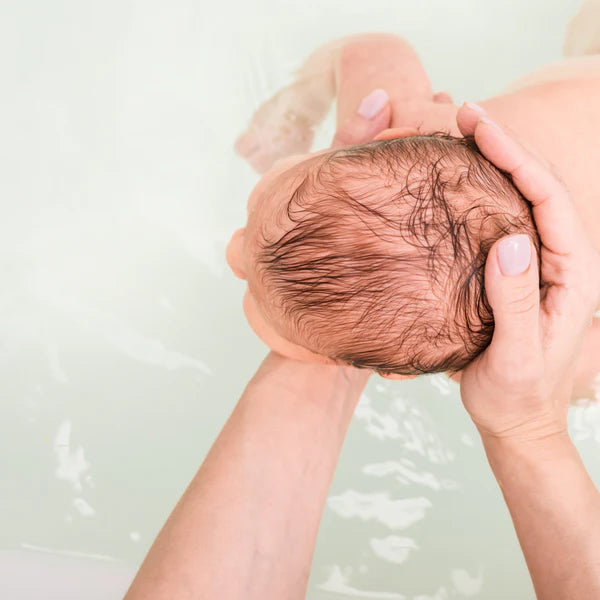
Getting used to water at home with a baby - bathing the baby
Bathing a baby for the first time can be exciting for both the baby and the parents. It is a good idea to start getting used to water at home as well. A small baby has a diving reflex that makes the baby hold his breath when water hits his face. When you do water exercises with your baby at regular intervals, where his face gets slightly wet, he will not “forget” this skill and the water will become a familiar element. Do all the exercises on the baby’s terms; if the baby does not like water, you should get used to it at a calm pace.
Tip for floating your baby in the bath: Help your baby onto his back into a relaxed floating position. Rest your baby on your arm and support his head well. Try to have your baby float in the correct position, with his ears underwater. This will help your baby get used to the water and he often likes this position. Remember to support your baby firmly so that he feels safe. Once your baby is used to floating at home, you can later float in the same way in the pool, which will make it feel familiar and safe for your baby.
Tips for bathing your baby:
- It is a good idea for both parents to participate in bathing the child at home.
- Bathe your child in a warm place and have a towel ready so you can quickly wrap your child in it.
- A tired and hungry child should not be bathed; it is best to schedule bath time in the evening, as children often sleep well after a bath.
- Bathe playfully and talk in a varying tone of voice. You can play calm music or white noise in the background.
- Change the baby's position frequently, keeping the entire body in the water in all positions (including the ears underwater).
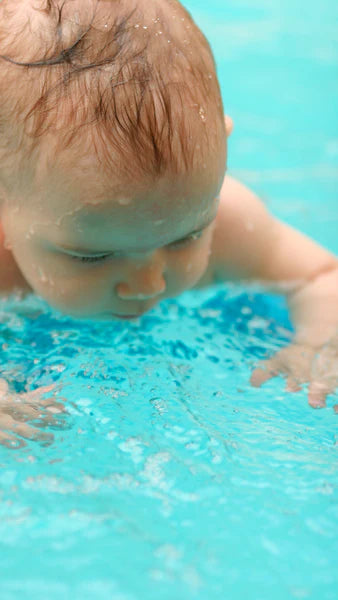
Guided baby swimming - the first swimming times
In baby swimming, the child does not learn to "swim" independently, but under the guidance of the parents.
under supervision and assistance to play in the water and dive. Diving training usually utilizes the diving reflex, which is a protective reaction when the child's head is underwater. The diving reflex prevents water from entering the child's airways, and by utilizing this, the child is taught to actively hold his breath when entering the water even before the reflex normally disappears. The number and duration of dives are limited according to the baby's age and are supervised by the instructor. This prevents the child from drinking too much water and overexerting himself.
The activity takes place on the child's terms, which is very important when the goal is to develop a child into a water lover.
During the first few swims, different holds are practiced and how to hold the child lightly with as little support as possible and as deep in the water as possible. The upright, back and stomach positions are constantly changed, while inventing different games and moving around the pool. Once the baby is used to the basic holds, you can handle him a little more briskly and increase the pace of the games. However, swimming is hard work for the child and you always have to stop to rest. Every swim should end with a pleasant experience for the child. (Tips and instructions from the suh.fi website).
During the first few swims, different grips and how to hold the child lightly with as little support as possible and as deep in the water as possible are practiced . Vertical, back and stomach positions are constantly changed, while inventing different games and moving around in different parts of the pool. Once the baby is used to the basic grips, you can handle him a little more briskly and increase the speed of the games. However, swimming is hard work for a child and you always have to stop to rest.
When should you not come swimming? Only come to baby swimming if you are healthy; you should not come swimming if you have a cold, ear infection or other infection. Ear infections are often difficult for a child and can cause a cycle of ear infections. Water itself does not cause ear infections, but bacteria, so it is not a good idea to come swimming if you have a cold, even if your child is otherwise healthy.
Tips for first swimming sessions with your baby
- Allow enough time. Make sure your child's basic needs (sleep, food) are met, then he will be comfortable in the water.
- Never feed right before swimming to reduce regurgitation.
- It is recommended to transport your child in a child safety seat in swimming pools and washrooms.
- Bring a towel large enough for the baby to be comfortable and warm in the pool.
- Wash yourself thoroughly from head to toe without a swimsuit. Note! Also wash your underwear carefully!
- Remove all jewelry. It collects dirt.
- Tie up long hair after washing or wear a shower cap. Make-up should also be removed before entering the pool.
- Wear a swimsuit for your baby while swimming.
- Some swimming areas also require the use of a swim cap under the swimsuit. Different swimming areas have different requirements for this.
- Move calmly in the washrooms and pool to avoid falling.
- Only go to the sauna after swimming. Do not throw a bath bomb while babies are in the sauna.
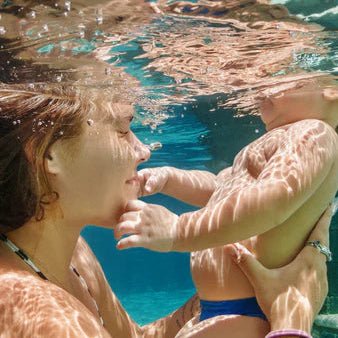
What do you need for baby swimming?
Swimsuit Your baby needs a swimsuit, we have neoprene swimsuits from 80cm as well as baby swimsuits and pants. A good swimsuit for baby swimming is tight and often has small legs. If you want a swimsuit that is easy to put on, we recommend just the swimsuit pants. Check out the selection here.
With or without a diaper? There are different recommendations for using a diaper depending on the swimming pool. Some baby swimming organizers advise swimming without a diaper, while others require the use of a diaper. It is worth finding out what the guidelines are at the swimming location you choose. If the swimming organizers do not require the use of a diaper, it is worth going swimming without a diaper. The diaper affects the baby's swimming position, so it is better for the baby to swim without a diaper. If a poop accident occurs while swimming, the swimming will have to be stopped anyway, because even diapers do not keep poop inside the diaper well enough. A tight-fitting swimsuit keeps poop inside just as well as a diaper. You can find tight-fitting neoprene pants in our selection, which provide good protection while swimming. Discover children's neoprene swimming pants here.
Other swimming accessories that are good to have with you
- Large towel for baby
- It is easy to transport a baby in a car seat, and it is a good idea to put a moisture barrier or towel in the car seat.
- A swimsuit, towel and swimming cap for the parent.
- A change of diaper and clothes
- A waterproof toy for your baby and a favorite pacifier or other familiar item, check out the selection here.
To the beach or on vacation with a small child?
In the summer, playing in the sand and on the beach is a favorite activity for many children. When going to the beach, we recommend a UV suit or neoprene suit to keep your child warm while playing.
Discover children's floating swimming instruction products and beach products here.


